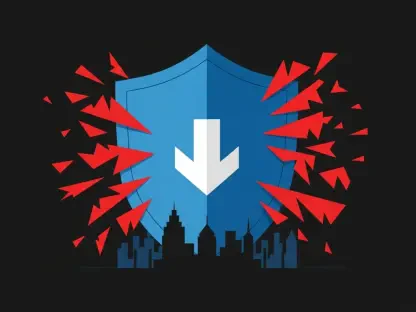Setting the Stage for Cyber Risk Innovation
In an era where cyberattacks rank as a top threat to global businesses, with annual losses from data breaches exceeding billions of dollars, the cyber risk management market stands at a critical juncture. Beazley Security, a specialized arm of Beazley Insurance, has recently broadened access to its Security Posture Reports (SPRs), positioning itself as a key player in the push for proactive cyber defense. This development comes at a time when organizations struggle to quantify exposure and secure adequate protection, sparking curiosity about how such tools can reshape market dynamics.
This analysis aims to dissect the implications of Beazley Security’s expanded SPR access within the broader cyber risk management landscape. It explores how this initiative addresses pressing market needs, reflects on current trends in cyber resilience, and projects future directions for the industry. By delving into data-driven insights and strategic innovations, the discussion seeks to uncover the potential impact on businesses navigating an increasingly hostile digital environment.
Unpacking Market Trends in Cyber Risk Management
Rising Demand for Proactive Solutions
The cyber risk management market has witnessed a seismic shift toward proactive strategies over the past few years, driven by the escalating sophistication of threat actors. Industry surveys, such as Aon’s latest Global Risk Management findings, reveal that cyberattacks and data breaches consistently top the list of organizational concerns. Yet, a staggering statistic persists—only 13% of companies have quantified their cyber exposure, leaving a vast majority vulnerable to underinsurance and unprepared for financial fallout. This gap has fueled demand for tools that offer actionable insights, a niche Beazley Security targets with its SPRs.
SPRs, initially rolled out for insurance assessments, provide detailed analyses of externally exposed assets through automated discovery and passive scanning. These reports pinpoint critical vulnerabilities, such as exploited software flaws, enabling businesses to prioritize remediation. With over 26,000 reports generated in a short span this year, the tool’s adoption signals a market hungry for precision and accessibility. However, smaller firms often face hurdles in implementing fixes due to limited budgets or expertise, highlighting a persistent challenge in equitable access to cyber defense resources.
Democratization of Cyber Tools: A Game-Changer
A notable trend reshaping the market is the democratization of advanced cyber tools, exemplified by Beazley Security’s decision to extend SPR access beyond clients to the general public. This move breaks down traditional barriers, such as high costs or exclusive service agreements, that have long restricted smaller players from leveraging cutting-edge solutions. For Beazley’s clients, added value comes through specialist consultations, ensuring insights translate into tangible risk reduction.
This inclusivity aligns with a broader industry push to level the playing field, yet it raises questions about scalability. As demand surges, maintaining quality support could strain resources, potentially impacting effectiveness. Still, the trend toward broader access reflects a maturing market where cyber resilience is increasingly viewed as a universal necessity rather than a luxury for well-funded enterprises. The ripple effect could drive competitors to adopt similar models, intensifying innovation across the sector.
Addressing Underinsurance and Risk Quantification Gaps
Underinsurance remains a critical issue in the cyber risk market, compounded by a lack of risk quantification. Many organizations underestimate the operational and financial toll of breaches, often assuming basic measures suffice. Data from recent industry analyses underscores the urgency—unquantified exposure not only jeopardizes individual firms but also destabilizes insurance markets by skewing risk assessments.
Beazley Security’s SPRs tackle this by providing concrete data on vulnerabilities, making abstract risks measurable and actionable. This approach also considers regional disparities, as digitally nascent markets may lack the infrastructure to adopt such tools fully. By pairing reports with educational resources, the firm aims to bridge these divides, fostering a market where informed decision-making becomes the norm. Such efforts could catalyze a shift, encouraging insurers and businesses to integrate quantification into strategic planning.
Projecting the Future of Cyber Risk Tools
Innovations on the Horizon
Looking ahead, Beazley Security is poised to redefine market standards with upcoming enhancements. The VERACIS client portal, currently in beta, promises continuous Exposure Management, offering real-time monitoring of attack surfaces updated with threat intelligence on active campaigns. By early 2026, tailored risk reduction recommendations will leverage historical data and incident records to quantify inaction costs, providing a compelling case for proactive investment.
Beyond technological advancements, regulatory pressures are shaping the market’s trajectory. Governments worldwide are tightening compliance mandates, pushing firms to adopt robust cyber frameworks. Economically, the cost of breaches continues to spiral, making integrated solutions—combining tools, intelligence, and response capabilities—indispensable. Beazley’s Managed Detection and Response (MXDR) solution, supporting over 180 systems since its launch last year, exemplifies this trend, hinting at a future where comprehensive platforms dominate.
Market Growth and Competitive Dynamics
The cyber risk management market is projected to grow significantly from 2025 to 2027, driven by rising threat levels and corporate investment in resilience. Tools like SPRs are likely to become baseline offerings as businesses prioritize visibility into external risks. This growth could spur competition, with established players and startups alike vying to capture market share through innovative pricing or feature sets.
However, challenges loom, particularly around adoption in under-resourced sectors. Smaller organizations may struggle to keep pace with rapid advancements, potentially widening the digital divide. For market leaders like Beazley Security, balancing innovation with accessibility will be key to sustaining momentum. The coming years may see consolidation as firms seek partnerships to deliver holistic solutions, reshaping competitive dynamics in profound ways.
Reflecting on Market Insights
Looking back, the analysis of Beazley Security’s SPR expansion revealed a market at a turning point, grappling with escalating cyber threats and systemic underinsurance. The push for proactive tools and broader access underscored a collective drive toward resilience, while forthcoming innovations hinted at a future of real-time, data-driven defense. Key implications emerged around the need for risk quantification and the challenges of equitable adoption across diverse market segments.
For businesses, the next steps involve leveraging accessible tools to gain visibility into vulnerabilities, even if immediate remediation is constrained. Collaborating with specialists to prioritize actions based on impact offers a practical path forward. Additionally, integrating cyber risk insights into insurance and business strategies emerges as a vital consideration to address exposure gaps. For the industry, fostering inclusive solutions and anticipating regulatory shifts provides a blueprint for sustained growth, ensuring cyber defense evolves as a shared priority rather than a fragmented effort.









